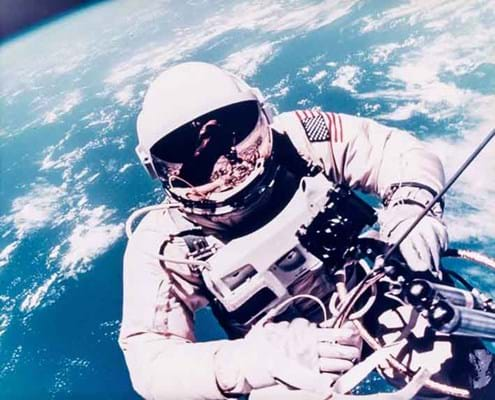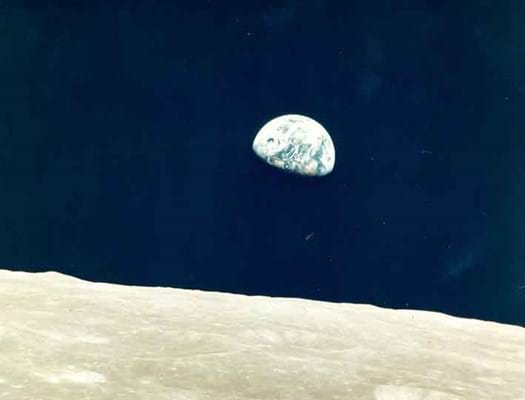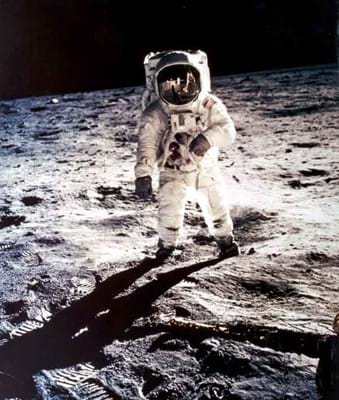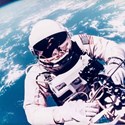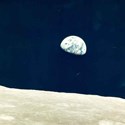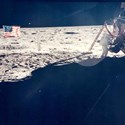According to The Picollecta Space Memorabilia index, this is why people collect space memorabilia. More importantly, it's on the up. Since 2004 the market for rare space artefacts has experienced a 10.35% per year rise in value.
Why? "The wealthy baby boomer generation, who grew up with the Apollo astronauts as their heroes, are a major reason behind this," says Paul Fraser, founder of Paul Fraser Collectibles, who deal in space memorabilia. "As this generation retires, they are returning to the passions of their youth."
These nostalgic baby-boomers were among the bidders at Bloomsbury Auctions' vast 692-lot single-owner sale of official NASA-stamped vintage astronauts' photos offered on February 26 in Maddox Street, London. Taken during the space missions of Mercury, Gemini, Lunar Orbiter and Apollo, the collection provided comprehensive coverage of NASA's space programme from 1945-72.
Such photos are of considerable rarity. NASA released only a small proportion shortly after each mission, printing them on high-quality Kodak paper. They were distributed to the public and media, with the remainder accessible only to accredited researchers in the archives of the Manned Spacecraft Center in Houston. The majority of Bloomsbury's photos were sourced from there.
'Golden Age'
Both well-known images from the golden age of space exploration and a large number of rare photos virtually unpublished at the time were included in this collection.
These featured a number of 'firsts': the first photo in space, the first high-quality colour photo of the whole planet Earth, the first 'Earthrise' seen by human eyes and even the first space 'selfie'.
Estimates ranged from £300 to £10,000, with the majority priced below £1000. Any concerns about flooding the market proved unfounded as 84% of lots sold to total £394,710.
A Bloomsbury spokesman said: "Almost every lot had several bidders and demand was evenly spread throughout the sale."
Buyers were almost exclusively private, with many from the US, but other countries also featured.
Apollo 11
The cachet of the space mission of Apollo 11 ensures photos associated with the first men on the Moon are often the most sought-after. Indeed, the record for a vintage NASA print is probably the £22,000 paid at another space sale held at Bloomsbury in 2011 for a large-format 'visor' portrait of Buzz Aldrin on the Moon with Neil Armstrong reflected in his gold-plated visor.
This image is all the more special because no good photos of Armstrong on the Moon exist. He held the famous Hasselblad camera most of the time, taking pictures from the camera on his chest because 'Hassies' had no viewfinders.
Another of these large-format, 2ft x 20in (61 x 51cm) photos was included from the collection but failed to drum up quite the same interest. Guided at £8000-10,000, it sold for £9000.
Yet, while the fascination with the first Moon landing means memorabilia from Apollo 11 are usually far more valuable than from any other mission, this is not necessarily the case for photos. "That's because of the stunning and pioneering nature of many of the earlier shots," says Mr Fraser.
Spacewalk
Take, for instance, the dramatic shots of Ed White performing the first US spacewalk in 1965 - now 50 years ago. Bloomsbury had several in the sale including the top-selling lot, an image taken by fellow astronaut James McDivitt. He captured Ed White's EVA (Extra Vehicular Activity) over Hawaii during NASA's Gemini 4 project, the second manned space flight.
At the time McDivitt said: "You're right in front, Ed. You look beautiful," to which White replied: "I feel like a million dollars." Measuring 16 x 19in (40 x 48cm), it was another large-format vintage print which helped it sell for £11,000 against a £3000-5000 estimate.
Earthrise
Another celebrated shot is William Anders' photograph of Earthrise on the Apollo 8 mission in December, 1968. The view of Earth appearing over the bleached lunar horizon was the first seen by human eyes. It was also unplanned.
"We didn't even see an actual Earthrise until, on our third orbit, we changed the spacecraft's orientation to heads up and looking forward," said Anders.
"As we came round the back side of the Moon, where I had been taking pictures of craters near our orbital track, I looked up and saw the startlingly beautiful sight of our home planet 'rising' up above the stark and battered lunar horizon."
Measuring 8 x 10in (20 x 25cm) and numbered in red on the verso, it soared above the £1000-1500 estimate to sell for £8000.
Demand for space memorabilia, particularly Apollo 11 items, looks set to reach a new level in 2019, the 50th anniversary of the first Moon landing.
Mr Fraser predicts "the celebrations around the event will bring new collectors to the hobby and reignite the passion of dormant enthusiasts. It will mean increased competition for the best pieces - pushing up prices".
The buyer's premium was 24/12%.


